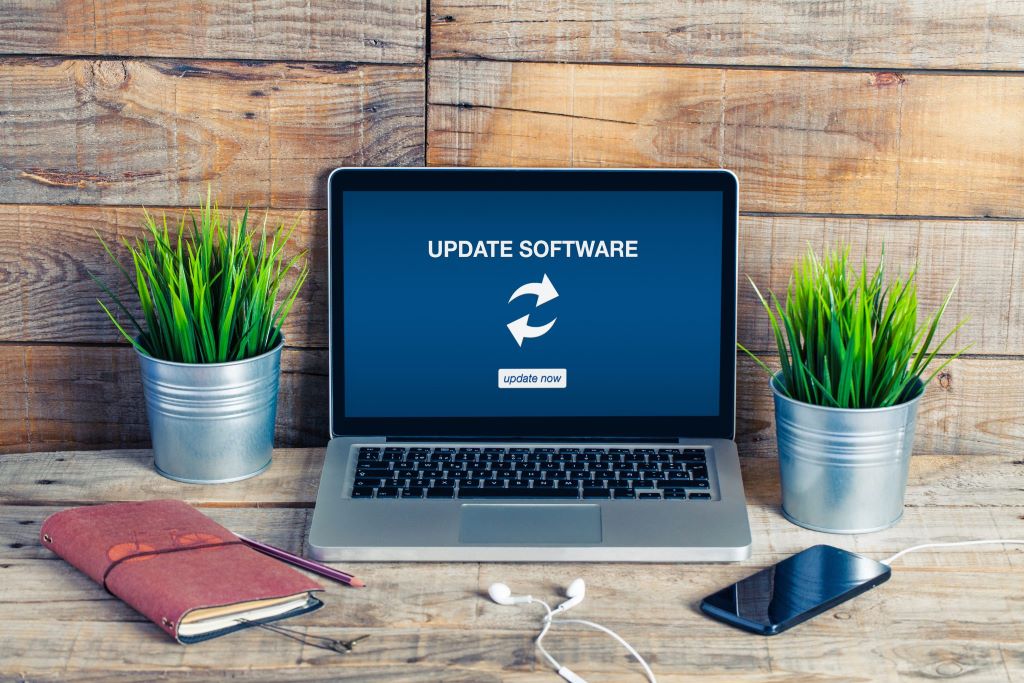In an age where technology intertwines with nearly every aspect of our lives, software updates have become an unavoidable reality. Those little notifications that pop up, asking you to restart for an update, can be easy to dismiss or postpone. However, these updates are more than just a minor inconvenience. They are essential for maintaining a smooth, secure, and enjoyable digital experience.
What Exactly Do Software Updates Do?
Let’s break down the key reasons why we need regular software updates:
- Security Patches: Software, even when well-made, can have hidden vulnerabilities cybercriminals are always seeking to exploit. Updates often contain critical security patches that plug these holes, protecting you from hackers, malware, and data breaches.
- Bug Fixes: No software is perfect. Bugs – coding errors that cause glitches and crashes – sometimes slip through the cracks. Updates address these bugs, making your devices and applications run more smoothly and reliably.
- New Features: Updates aren’t just about fixing what’s broken; they frequently introduce exciting new features. This could be anything from an enhanced user interface to powerful productivity tools.
- Compatibility: The tech world is constantly evolving. Updates keep your software compatible with the newest hardware, other programs, and online services.
- Performance Optimization: Updates may contain tweaks that boost your software’s speed and efficiency. This means faster loading times, smoother operation, and maybe even improved battery life for mobile devices.

The Dangers of Avoiding Software Updates
Ignoring updates might seem like the convenient choice in the short term, but it sets you up for a plethora of potential tech headaches:
- Vulnerable Devices: Outdated software is a cybersecurity nightmare waiting to happen. Hackers pounce on known, unpatched vulnerabilities. Your data, accounts, and overall online safety are left exposed.
- Frustrating Glitches: Old versions of software often harbor bugs that lead to crashes, freezes, or inexplicable errors. This makes for a poor user experience and wastes time.
- Compatibility Nightmares: Trying to run outdated software on new hardware or use it alongside new online services can result in irritating compatibility issues. Your tech may simply not work as intended.
- Outdated Experience: Skipping updates means missing out on improved features, streamlined interface designs, and a better overall user experience.
- Slow Devices: Inefficiencies and bugs in old software drain hardware resources. This translates to sluggish performance that gets worse over time.
Making Software Updates Work for You
Here’s how to handle software updates to minimize frustration and maximize benefits:
- Automate Updates (When Possible): Most operating systems and popular apps offer options for automatic updates. This means they can download and install in the background, often during off-hours.
- Schedule Updates: Pick a convenient time if you don’t want updates at random. Maybe late at night or during your lunch break. Plan ahead before a major update so you won’t be caught unprepared.
- Read the Changelogs: Major updates usually list changes. Taking a quick look helps you prepare and understand the benefits you’re getting or if any changes affect your workflow.
- Prioritize Security Updates: While all updates matter, those patching security flaws should be an immediate priority. Don’t put off protecting yourself from known threats.
- Backup Before Big Updates: Just in case, it’s always smart to have a backup of your critical data before major operating system updates – the ones that change the version number significantly.
What Are the 5 Reasons Why Cybersecurity is Important Now More Than Ever?
Additional Considerations
- Legacy Systems: Very old devices and software sometimes reach an end-of-life state where they no longer receive updates. Be aware of this, as it’s a major security risk and might necessitate upgrading.
- Stability Concerns: In rare cases, an update itself can introduce new bugs. If you’re highly dependent on a specific piece of software, it can be worth checking online forums or tech news to see if widespread problems are reported after a major update before installing.
The Bottom Line: Don’t Put Your Tech at Risk
View software updates not as annoyances, but as acts of tech self-care. By staying up-to-date, you ensure your digital world remains secure, functional, and a joy to use. Embrace those updates and save yourself future tech headaches!